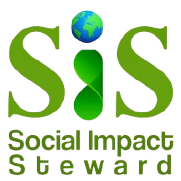Lets refer to our case study today as When Great Grand Gestures Enterprises (GGGE) .
When GGGE was launched, as a social enterprise, everything seemed to be falling into place. The idea was solid, the mission was clear, and early traction showed promise. Investors expressed interest, customers responded positively, and the organization quickly gained recognition for its impact.
But just as momentum was building, cracks started to appear. At first, they were small—delayed payments, missed targets, and an increasing struggle to cover operational costs. But soon, these issues snowballed into something much bigger. Within months, the social enterprise found itself in serious financial trouble, struggling to stay afloat.
The Critical Mistake
Like many purpose-driven businesses, the founder was deeply committed to creating impact. However, in the process, financial sustainability took a backseat. The organization focused heavily on community service, expansion, and delivering value but failed to develop a solid revenue model to keep operations running long-term.
The assumption was that because the work was meaningful, funding and sales would naturally follow. It didn’t.
This is a mistake many social enterprises make—believing that passion and purpose alone will sustain a business. But without a clear financial strategy, even the most impactful ventures risk collapse.
The Turning Point
Faced with the reality of potential shutdown, GGGE had to make a critical decision—either continue hoping for external funding to cover the gaps or restructure the business for long-term sustainability.
They chose the latter.
Reassessing the Business Model – The team identified where they were losing money and where they could generate consistent revenue.
Developing a Stronger Revenue Strategy – Instead of relying solely on grants and donations, they introduced paid services and strategic partnerships to diversify income.
Cutting Unnecessary Costs – Operational inefficiencies were addressed to maximize resources without compromising impact.
Focusing on Financial Planning – Instead of making decisions based on assumptions, they implemented data-driven financial tracking to stay on top of cash flow.
Lessons for Every Social Entrepreneur
This near-collapse was a wake-up call, but it led to a more resilient and scalable business model. The experience offers valuable insights for any social enterprise looking to succeed long-term:
Sustainability matters as much as impact. A business must be able to sustain itself financially to keep delivering change.
Passion alone won’t pay the bills. Purpose is important, but without a structured revenue model, even the best ideas can fail.
Diversify income streams. Relying on a single funding source—whether grants, donations, or one major client—puts an organization at risk.
Track financial health, not just impact. Growth isn’t just about expanding services; it’s about ensuring financial stability.
Recognize when it’s time to pivot. Stubbornly sticking to an unsustainable model can do more harm than good. Adaptability is key.
The Comeback
With a refined approach, GGGE was able to turn things around. The business not only survived but came back stronger—equipped with the right strategies to ensure both impact and profitability.
The story serves as an important reminder: social enterprises are still businesses. If sustainability isn’t prioritized, even the most promising initiatives can fail.
Here’s to the success of GGGE and other social enterprises on the path to re-evaluation and scaling.
For any entrepreneur working in the social impact space, the question isn’t just “How can we help?”—it’s also “How can we sustain?” Because without the second question, the first one won’t matter for long.




